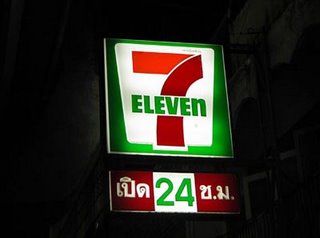I wrote most of this post last week, but then thought it should sit for a while. The starting-point was a column in early September by
NY Times columnist and Princeton economist Paul Krugman on the image below (sorry, no link; Krugman is part of the Times Select category, meaning you have to subscribe to read his columns--another reason to pick up the free
Times papers on campus):

Krugman uses the image to call attention to Americans’ turning away from the disaster in the background for what appears to be a casual lunch-time discussion. In response, some of the subjects have protested that they were indeed talking about the attack, and the camera simply caught a moment when they turned to listen to another participant.
There is of course no way to know what was going on at that moment in the dialogue of this mini-drama.
Richard Cohen of the Washington Postdiscusses this photo as evidence that photos, even when literally true, can indeed lie:
Photography, of course, is often a lie, and this photo is no exception. It captured a moment, a second or less, when one of the subjects said something and the other four turned toward him and away from the plumes of smoke, so they seemed not to care. This photo, like all photos, lacked context -- what went before and what went after -- and the interpretation of insouciance has been challenged by no less than some of the people in it. They insist they were intensely aware and horrified by what happened.
We interpret such photos from inside stories. One such story, which Krugman’s reading of the photo draws on, is the call to respond to the attacks by going shopping (otherwise, the terrorists have won) and otherwise staying with our daily routines. It’s hard to sustain the claim that the war against terror is a battle for civilization itself when that’s been the first appeal to the American public.
We are always inside of such stories, and while we may reference several which are ultimately contradictory—9/11 is our generation’s Pearl Harbor vs. 9/11 can’t threaten our normal everyday routines—we can’t do that in such rapid alternation. Analysis can get at the text before us, but we need also to use it to get at the stories we inhabit.
When I set up this blog years ago, I grabbed the title "Objects in mirror" etc. from a moment in
Jurassic Park: Jeff Goldblum, Laura Dern, and the Aussie guy are pulling away in their Toyota jeep as quickly as they can from a pursuing tyrannosaurus, when there's a cut to a view in the right-side mirror, showing an image of the snapping dinosaur, along with the warning statement. The statement is a reminder to drivers that the mirror's curvature distorts what it shows, sacrificing accuracy for a wider perspective. I think that is a fair account of what a blog does, pulling a wide view of phenomena into a personally shaped frame. Blogs are ways of telling others what it's like to be inside that story.
 http://www.pbase.com/wyk/favorites
http://www.pbase.com/wyk/favorites



